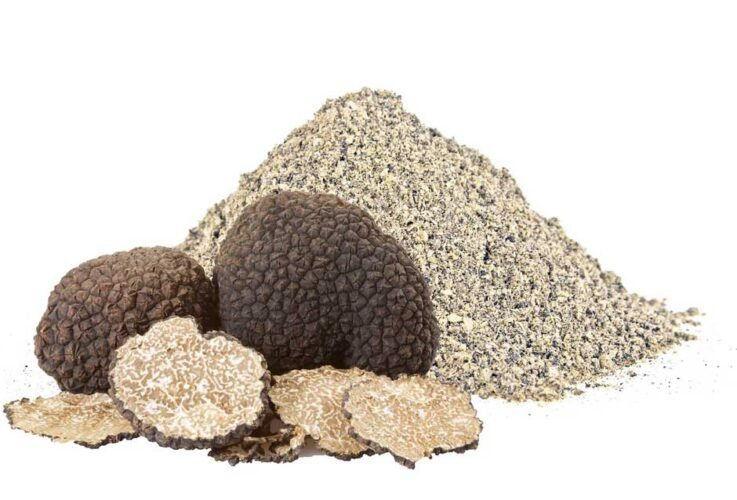Truffles are one of the most luxurious and mysterious culinary delicacies on Earth. Their aromatic presence graces the menus of fine restaurants, and they can sell for thousands of dollars per pound. But despite their prominence in haute cuisine, truffles remain a mystery to many. A key question that arises is: where do truffles grow? This blog will uncover the ecological, geographical, and environmental secrets behind these underground treasures and explore the curious world they inhabit—both below and above ground.
The Underground Life of Truffles
To understand where truffles grow, it’s essential to understand how they grow. Truffles are a type of ectomycorrhizal fungus, which means they form a symbiotic relationship with the roots of certain trees. Unlike mushrooms that pop up above the soil, truffles develop entirely underground. This is one reason why so many people wonder: do truffles grow underground? The answer is a resounding yes.
Truffles depend on their host trees for nutrients. In return, they help the trees absorb water and minerals more efficiently. This mutualistic relationship is key to their development. Once the truffles mature, they emit a potent aroma—sometimes likened to garlic, cheese, or even gasoline—which attracts animals such as pigs, dogs, and small mammals. These animals help spread the spores by digging up the truffles and eating them, ensuring the fungal life cycle continues.
Because truffles grow underground and in such specific ecological niches, they are notoriously difficult to find. This is where trained animals come in, especially truffle-hunting dogs, which are now preferred over pigs due to their less destructive digging habits.
The Trees That Host Truffles
Truffles do not grow in isolation; they are entirely dependent on their host trees. The most common trees associated with truffle growth include oaks, hazelnuts, poplars, beeches, and pines. These trees provide the root systems that truffles latch onto in order to thrive. Not all trees are suitable, however—specific soil and climatic conditions must also be met.
The roots of these trees act as a kind of underground nursery for truffles. Within a few inches to a foot beneath the surface, the truffles begin to form, slowly maturing over the course of several months. This process requires not just time but an ideal blend of soil pH, moisture, and temperature. Typically, truffles favor alkaline soils that are well-drained and rich in calcium. Soil too acidic or too clay-rich is unlikely to yield any truffles.
In managed truffle orchards—called truffières—farmers often plant rows of these host trees and inoculate their roots with truffle spores. However, it can take years before any truffles are harvested, and the yield can vary widely based on weather, soil, and other environmental factors.
Regions Where Truffles Naturally Grow
Truffles are native to a range of regions across Europe, North America, and parts of the Middle East and Asia. The most famous varieties—the Périgord black truffle and the Alba white truffle—are associated with France and Italy, respectively.
In France, truffles grow abundantly in the regions of Périgord and Provence. These areas are known for their limestone-rich soils, Mediterranean climate, and abundance of oak trees—all ideal conditions for truffle production. Similarly, in Italy, white truffles flourish in the Piedmont region, particularly around Alba, where they are celebrated each autumn during the annual White Truffle Festival.
Beyond Europe, truffles can also be found in parts of North America, particularly in the Pacific Northwest. Oregon, in particular, is becoming a hub for native truffles, such as the Oregon black and Oregon white varieties. These truffles are distinct from their European cousins but have been gaining popularity among chefs and food enthusiasts.
Interestingly, truffles are also being cultivated successfully in places like Australia, New Zealand, Chile, and even parts of China. These regions have adopted European cultivation techniques and have tailored their agricultural practices to simulate the natural growing conditions truffles require.
The Role of Climate and Soil
Soil composition and climate are crucial in determining where truffles can grow. Most truffle varieties prefer a Mediterranean climate—warm summers, mild winters, and just the right amount of seasonal rainfall. Too much rain can flood the soil and rot the truffles, while too little can stunt their development.
Ideal truffle-growing regions also tend to have a seasonal climate, where a clear difference between summer and winter helps regulate the truffle’s growth cycle. Truffles often begin to form in the spring and grow throughout the summer, maturing by late autumn or early winter when they are ready for harvest.
As for the soil, it must be well-drained and aerated to prevent waterlogging. A high calcium content (pH of around 7.5 to 8.3) is ideal. Soil testing and preparation are a fundamental part of both wild truffle foraging and commercial truffle farming. Farmers may spend years preparing a site before planting trees and inoculating them with truffle spores.
Elevation can also play a role. While most truffles grow at lower altitudes, some varieties, like the Burgundy truffle, can be found up to 1,000 meters above sea level. However, even in higher regions, the same soil and climate principles still apply.
Truffle Cultivation: A Growing Global Industry
The demand for truffles has led to a surge in truffle cultivation, particularly as wild truffle habitats face threats from climate change, deforestation, and urbanization. Cultivated truffles now account for a significant portion of the market, especially for black truffles.
To cultivate truffles successfully, farmers must first secure suitable land—one with the right pH, drainage, and elevation. They then plant saplings of oak or hazelnut trees whose roots have been inoculated with truffle spores. The waiting game begins, as it often takes 5 to 10 years before the first truffles appear.
Once the trees are mature enough and conditions are right, the truffles begin to grow underground. Because they are hidden from view, farmers must rely on trained dogs to locate them. Each season, the dogs sniff out the mature truffles, which are carefully dug up by hand.
Despite the careful planning, truffle cultivation is still a gamble. Weather anomalies, pests, and disease can wipe out a harvest. Nevertheless, the potential rewards are great. A single acre of successful truffle trees can yield several pounds of truffles, which can fetch hundreds to thousands of dollars per pound.
Cultivation has also allowed newer players—like Australia and the United States—to enter the market. In fact, Australian truffles are now considered among the best in the world, often rivaling their European counterparts in aroma and flavor. This global expansion has brought truffles to more tables and has slightly eased the pressure on wild truffle populations.
The Enigmatic World Beneath the Surface
Truffles are truly a marvel of nature. Their growth is hidden from sight, occurring deep beneath the forest floor, nurtured by symbiotic relationships with specific trees. Their preference for particular soils and climates makes them as rare as they are revered. Indeed, anyone asking “do truffles grow underground” is uncovering just the beginning of a fascinating story—one rooted in science, ecology, and culinary tradition.
Whether foraged from ancient European forests or harvested from meticulously managed orchards in Oregon or Tasmania, truffles remain one of the most coveted and enigmatic ingredients in the culinary world. Their elusive nature only adds to their charm, as does the knowledge that below a seemingly ordinary patch of earth, something truly extraordinary is growing.










